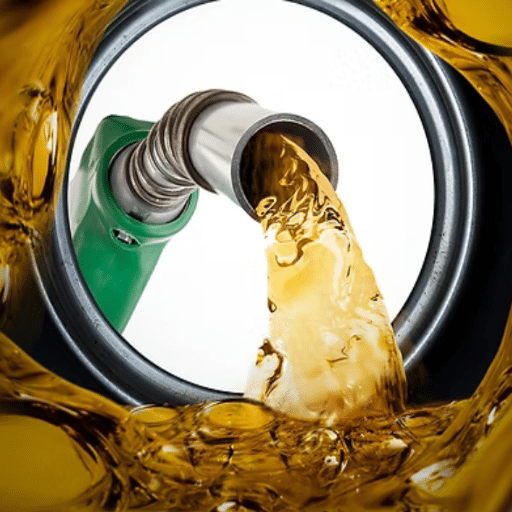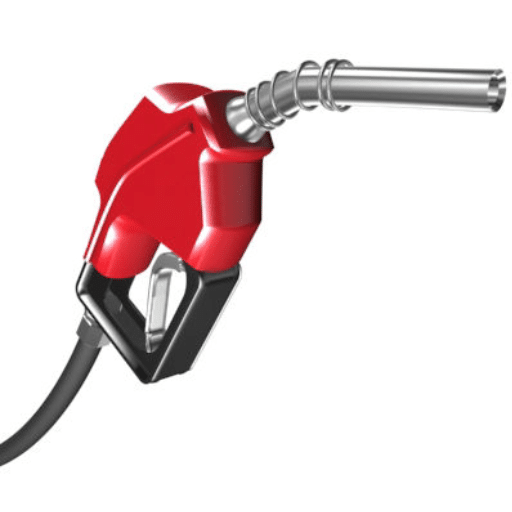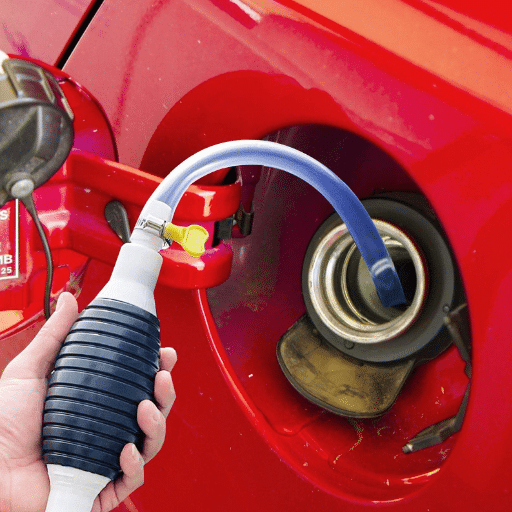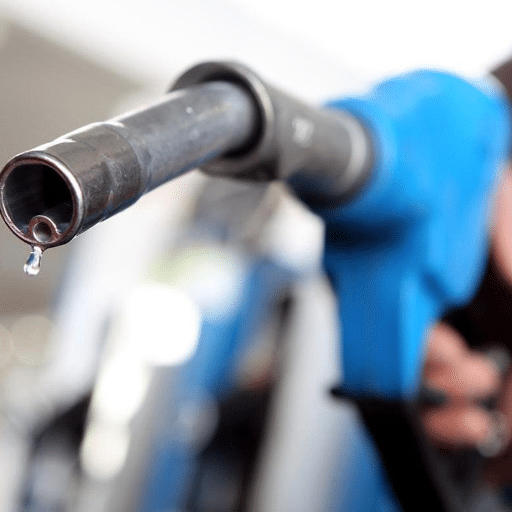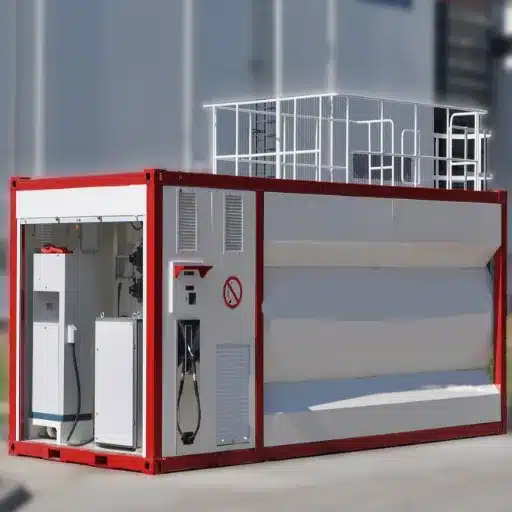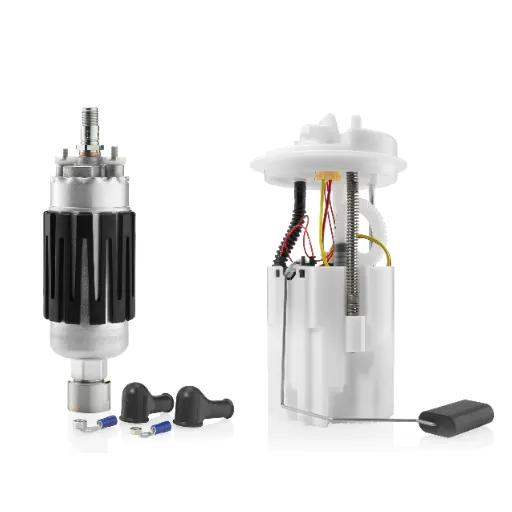Taking an important step to keep gas stations working efficiently, undersoil oil tanks generally go unnoticed by the average customer. Have you ever wondered how deep these massive storage tanks can be buried or what the purpose of having them underground is? This article delves beneath the gas pumps into the intricate design and operation of these tanks, their environmental hazards, and the safety procedures involved in storing fuel with all necessary security measures. This guide offers those eye-opening insights into hidden infrastructure that supports our everyday commute for the average curious driver or someone interested in learning about how a gas station works.
Overview of Oil Tanks
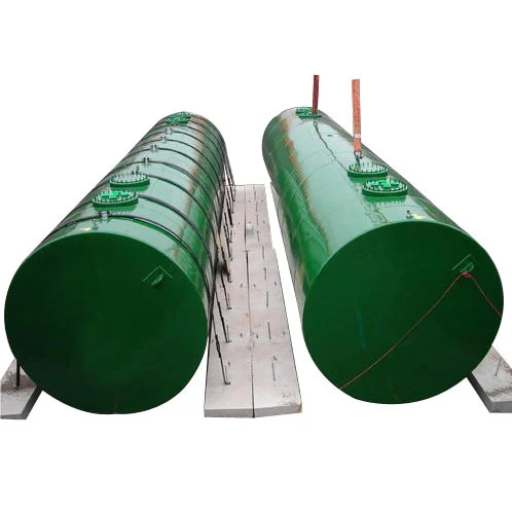
The underground oil tanks at a gas station are large tanks designed for safe and efficient storage of fuel. They are buried deep beneath the earth chiefly to save space, prevent fires, and protect gasoline from environmental hazards such as extreme weather. Tanks made from strong materials like steel or fiberglass are constructed to ensure that no leak occurs and corrosion can be resisted. They are fitted with monitoring instruments to detect any leaks and ensure safety. Thus, this setup is necessary for refueling cars while minimizing environmental hazards.
Types of Oil Tanks
Oil tanks are typically categorized as above-ground, underground, single-wall, double-wall, and residential or commercial tanks.
|
Type |
Placement |
Wall Type |
Usage |
Material |
|---|---|---|---|---|
|
Above-Ground |
Surface |
Single/Double |
Residential |
Steel/Fiber |
|
Underground |
Buried |
Single/Double |
Commercial |
Steel/Fiber |
|
Single-Wall |
Surface/Bury |
Single |
General |
Steel/Fiber |
|
Double-Wall |
Surface/Bury |
Double |
General |
Steel/Fiber |
|
Residential |
Surface/Bury |
Single/Double |
Homes |
Steel/Fiber |
|
Commercial |
Surface/Bury |
Single/Double |
Industry |
Steel/Fiber |
Purpose of Underground Oil Tanks
Operating as storage tanks, these underground oil tanks provide storage for oil used in various purposes, including residential, commercial, and industrial applications. Their principal function involves storing fuel oil for use in heating systems, power generation, or as an energy source for other processes. By being buried underground, these tanks help conserve surface space, limit exposure to environmental conditions, and minimize the risk of tampering or accidental damage.
Modern underground oil tanks emphasize durability and environmental protection. Double-wall constructions, for example, add an extra margin of safety against the leakage of oil or a spillage. Some other tanks are fabricated with corrosion-resistant materials, such as fiberglass or lined steel, depending on the type of environment where they will be installed, ensuring their lifespan is assured even in moisture-laden atmospheres. Industry reports indicate that underground storage systems account for a substantial percentage of oil tank installations in the commercial sector, with a trend toward environmentally friendly designs that comply with regulations on environmental safety.
Additionally, these tanks can vary in capacity to meet diverse needs, ranging from small residential units holding a few hundred gallons to large commercial units with capacities of several thousand gallons. Proper maintenance and monitoring of these tanks remain essential for their efficiency and to prevent contamination of the soil and groundwater, necessitating regular inspections and upgrades.
Regulations Surrounding Oil Tanks
Oil tank regulations are crucial for protecting the environment, ensuring public safety, and maintaining operational reliability. Federally, the United States Environmental Protection Agency (EPA) sets strict guidelines for both underground and aboveground storage tanks. Preventing leaks and spills is of utmost importance. USTs, under the Resource Conservation and Recovery Act (RCRA), must be protected against spills, overfilling, and corrosion. Such tanks have to be regularly inspected under these state regulations and have leak detection systems installed.
Meanwhile, some states and local governments impose much stricter standards. For example, jurisdictions like New York and California require secondary containment and advanced leak detection technology as a precaution. According to statistics, more than 500,000 underground storage tanks are currently regulated nationwide, with leaks decreasing substantially as a result of these regulations.
Owners are responsible for conducting regular inspections and maintaining well-organized documentation. Also, owners should ensure that tanks comply with the latest industry standards. Double-walled tanks are the most common installation today and offer significant safety benefits. Violations could lead to fines, compulsory cleanups, or the removal of the tank itself. It becomes imperative for homeowners and commercial operators to stay informed about local and federal changes to avoid inconveniences, penalties, and environmental degradation.
Depth of Burying Oil Tanks
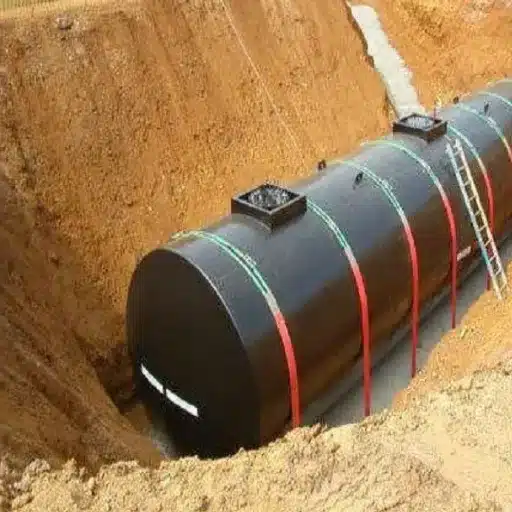
Usually, the appropriate depth for burying oil tanks depends on local laws and environmental factors. Usually, oil tanks are buried with at least two to three feet of soil on top to shield them from external pressures, such as vehicle weights, and to prevent freezing. Ensure compliance with your local building code and environmental guidelines regarding specific depth requirements.
Typical Depths for Oil Tanks
The depth of burial for oil tanks can vary due to differences in soil type, environmental regulations, and local climate conditions. Most oil tanks installed for residential purposes are buried at a depth that provides at least 2-3 feet of soil cover. However, to ensure protection against physical damage from heavy vehicle traffic or extreme winter weather, the tanks may need to be installed at a deeper level.
Some regulations permit burial depths of up to 4 feet in colder regions, where frost can adversely affect ground integrity at deeper levels. Commercial tanks, being generally larger, may need even deeper burial for stability and safety purposes. The installation of the tank inside a secondary containment system or protective casing is also a common practice for extra safety.
Local regulations typically specify precise depth requirements, which tend to vary significantly. For instance, some municipalities require protection from 5 feet up and beyond, usually based on specific environmental concerns, such as water tables or soil composition. Consulting certified professionals and thoroughly reviewing local codes should go a long way in helping to determine the exact depth required for your oil tank.
Factors Influencing Tank Depth
Several factors contribute to determining the depth of an oil tank. The first consideration involves scrutinizing local regulations, as they often specify minimum burial depths to address safety and compliance issues. The composition of the soil must also be considered, as it may require intensive installation in some instances. It also depends on the local water table, as it affects the stability of the container and its susceptibility to corrosion. Thus, weighing these factors along with consulting with professionals ensures that the tank will be installed to an appropriate and accepted depth.
Comparing Oil Tanks and Gas Station Tanks
While both oil tanks and gas station tanks serve as storage systems for fuel, their design, materials, and usage vary significantly depending on the application and safety requirements.
Purpose and Usage: Oil tank storage is primarily used for heating oil, which is used to heat residential or industrial buildings at the site of consumption. Gas station tanks, also known as commercial fuel storage, dispense gasoline or diesel to vehicles. This difference in the fundamental purpose changes their structural and safety design requirements.
Capacity: Thus, oil tanks generally range from a pan capacity of 275 gallons for residential use to thousands of gallons for industrial applications. Gas station tanks, however, are engineered to hold huge volumes. According to the size of the station and the demand, an underground gasoline tank can contain anywhere from 10,000 to 50,000 gallons.
Materials: Residential oil tanks are made from materials that include coated steel and fiberglass, as these two materials resist corrosion due to heating oils. Gas station tanks, on the other hand, are typically constructed from double-wall steel or composite fiberglass and steel, featuring advanced corrosion-protection systems to prevent environmental contamination, especially in long-term underground installations.
Regulatory Standards: The higher risk of fuel leaks and environmental concerns make gas station tanks the most strictly regulated by both federal and state laws. The regulations often require advanced leak detection systems and effective spill prevention measures. Oil tanks, by comparison, are also regulated but less strictly, especially in the case of small residential systems, although some local codes still apply.
Safety Systems: Gasoline tanks are equipped with the most safety features, including automatic shut-off valves, vapor recovery systems, and overfill alarms, to minimize the potential hazards associated with refueling. Oil tanks have more basic safety systems designed to prevent leakage and venting under pressure.
In essence, when compared, gas station tanks emphasize high-volume storage, public safety, and environmental protections, whereas oil tanks are oriented for private heating needs, with smaller capacities. Each is essential in its way.
Understanding these differences helps emphasize why distinct designs and regulations are vital for their particular applications.
Gas Station Tanks: Depth and Safety
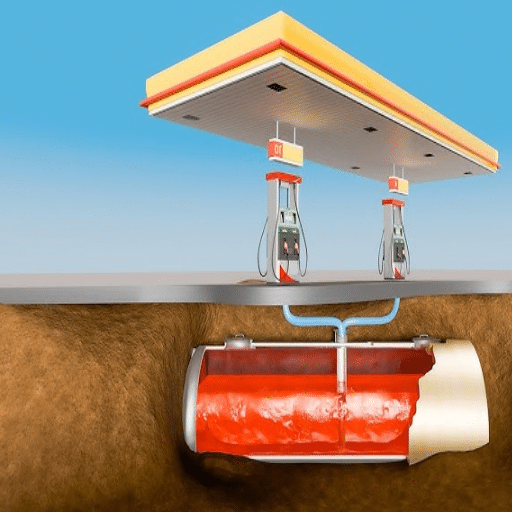
Such tanks are essential for storing fuel efficiently to meet the public’s demand. Some of the crucial features that can help prevent a tank from contaminating the environment are double walls and leakage detection systems. The tanks are buried underground to minimize risk and conserve surface area, which must be done by strict safety standards. All installations undergo periodic inspections and maintenance to ensure their integrity about environmental and public health concerns.
How Deep Are Gas Station Tanks Buried?
Gas station tanks were placed anywhere from 3 to 6 feet below the surface, depending on local law, tank size, and site considerations. The minimum depth ensures the tanks are protected from external factors, such as accidental damage, traffic, or environmental changes. Tanks need to be buried deeper so that they never freeze in a cold climate, which, again, would vary depending on the local frost line. It is also a standard in the industry that tanks must have at least 2 feet of cover material, such as soil or concrete, on top for basic protection.
Deeper placements may be required to comply with zoning laws, prevent interference from underground utilities, or accommodate the larger tanks needed to meet high fuel demand. Nevertheless, higher depths will make maintenance and inspection requirements very complicated. Therefore, the installation shall have a precise design, ensuring the tank depth is optimized to meet environmental safety requirements and engineering best practices, for the sake of both safety and functionality.
Impact of Depth on Safety Regulations
The safety regulations and environmental hazard considerations related to the depth of underground storage tanks (USTs) must be taken into account. They stipulate that tanks be installed at a depth relative to the potential for accidental damage caused by surface activities, such as vehicular traffic or construction activities. The EPA also suggests that tanks be installed with 12-24 inches of cover, depending on whether it is under paved or unpaved surfaces.
The increased depths sometimes can bring extra requirements due to having greater risk factors. Increased depth also means increased pressure on the tank walls, thereby requiring more rigorous integrity testing and the use of superior materials to prevent leaks. Tanks not buried too deeply may also require additional safeguards, such as reinforced barriers or advanced monitoring systems, to facilitate the immediate detection of leaks or corrosion.
Another consideration for the interrelationship between depths, soil type, and climate must be taken into account. For example, in areas of frost, tanks need to be installed below the usual frost line to avoid structural damage from the effects of freezing soil. Soil conditions should be thoroughly analyzed to ensure stability, as a poorly supported tank is prone to shifting or settling and could compromise safety seals.
Data supports the notion that contamination risks are behind poor depth-based installations. Past reports have shown that leaking underground tanks, when placed at very shallow depths and without sufficient cover, have contributed significantly to incidents of groundwater pollution. Adequate compliance with depth-based safety codes considerably reduces such risks, thereby protecting human lives and the environment while ensuring the long-term efficiency of storage systems.
Monitoring and Maintenance of Buried Tanks
Regular monitoring and maintenance of underground tanks are crucial for preventing the leakage of liquid contents and protecting the environment. Inspections must be carried out regularly to identify any variation in tank integrity or other early signs of corrosion. For example, installing leak detection systems, such as an automatic tank gauging (ATG) system that continuously monitors tank levels and records any discrepancies that could point to a leakage, could be considered.
According to industry standards, tanks should undergo periodic pressure testing to verify the integrity of their construction. Corrosion remains a significant cause of failures in underground tanks, with statistics indicating that this is particularly true for steel tanks. Hence, from this standpoint, cathodic protection systems, whether using sacrificial anodes or an impressed current system, should be highly encouraged to minimize metal degradation losses.
Clean tanks are also a critical aspect. Tank sludge or microbial growth, especially in fuel tanks, could lead to operational disturbances and contamination. According to a study, cleaning tanks every 5-7 years will significantly improve their performance and lifespan. Maintaining detailed logs of maintenance exercises is, therefore, a necessity, not only for environmental compliance but also to have a trackable upkeep history.
At the same time, remote monitoring systems are gaining ground in the sector, thanks to Internet of Things (IoT) offerings. The systems would enable real-time data tracking and remote diagnostics, thereby fostering better preventive capabilities and faster reaction times during incidents.
Environmental considerations for underground oil tanks at gas stations
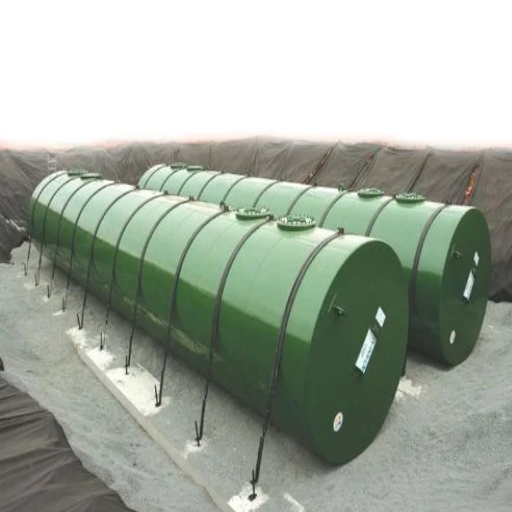
Leak Prevention: The integrity of underground tanks should be maintained to prevent leaks that may contaminate the soil and groundwater. Regular inspection, maintenance, and the use of corrosion-resistant materials are essential measures that must be observed.
Spill Containment: Spill containment systems are installed around tank entry points to prevent oil spills during refueling or maintenance activities.
Monitoring Systems: Advanced leak detection and monitoring technologies, such as Automatic Tank Gauging (ATG) and Interstitial Monitoring, help prevent environmental damage by identifying leaks at their earliest stages.
Regulatory Compliance: Environmental rules and regulations must be adhered to at the local, state, and federal levels to ensure a penalty-free and environmentally responsible operation. Proper documentation and reporting are essential components of compliance.
Decommissioning and Upgrades: Once an appropriate tank becomes unserviceable, decommissioning must proceed properly, including testing of the soil and the safe removal of the tank. Upgrading before decommissioning, whenever practicable, can help prevent potential long-term environmental hazards.
Risks of Underground Oil Storage
Underground storage of oil poses several hazards that can have significant environmental and economic consequences. One of the significant hazards is leakage due to corrosion or an aging system. Even minor leaks have been reported to cause contamination of soil and groundwater. In the United States, more than 9,000 confirmed releases from underground storage tanks are reported annually. Such contamination poses its costs for cleanup and long-term damage to the local ecosystem.
Moreover, an undetected leak can pose a health hazard, as contaminated water supplies may be a source of human exposure to toxic substances, such as benzene, a recognized human carcinogen. Another risk is the overfilling of tanks, which can lead to surface spills and potentially greater environmental hazards. There is also the risk that vapors accumulate in improperly maintained or unmonitored tanks, making them prone to explosions or fires that pose an immediate safety hazard.
The economic costs of these risks are incredibly high, and the Environmental Protection Agency has poured billions of dollars into remediation related to leaking underground storage tanks. Legal inspections, maintenance of tanks before problems arise, and adherence to regulations are essential to keep such risks under control and ensure the safety of the environment and the public.
Leak Prevention Measures
Leaks from SGPU interfacial tanks can be prevented by blending very advanced technology with proper maintenance and adherence to regulations. Among such preventive measures, the most effective is to install double-walled tanks and piping systems, thereby mitigating the risk of leakage, as these provide an additional barrier against contamination. The most widely used systems to detect leaks are ATGs, which are systems designed to gauge fuel levels and detect inconsistencies that may indicate leakage. According to the EPA, ATG systems are a crucial component in the early detection of leaks, thereby significantly reducing environmental damage.
Another significant reason for the leak is corrosion. Through the use of corrosion-resistant materials, such as fiberglass-reinforced plastic for USTs or steel tanks with anticorrosion coatings, the tanks’ lifespan can be prolonged, thereby reducing the rate of failures. Moreover, regular inspections and cathodic protection systems are crucial for metal tanks to prevent corrosion-induced degradation. Industry standards recommend tightness testing and inspection every three to five years to identify potential weaknesses arising in the tank early.
Another emergent set of leak detection technologies comprises interstitial monitoring for double-walled tanks and continuous in-tank monitoring systems. Advancements over the recent years have provided these systems with the capability of identifying leaks of 0.1 gallons per hour or even smaller ones, making both response times faster and environmental damages more limited.
Additionally, employee training bears paramount significance for leak prevention. Training the operators in proper maintenance procedures and emergency response minimizes human error and promotes early intervention. Hence, a well-designed training program, combined with technological advancements, will significantly enhance the defense against costly and hazardous leaks.
Assessing Soil and Groundwater Impact
The leakage leads to soil and groundwater contamination, which, in turn, contributes to environmental damage. Contaminants, such as petroleum products or chemicals, enter the soil and migrate to groundwater sources, endangering both the respective ecosystem and human health. Recent studies indicate that groundwater contamination contributes to 26% of the world’s waterborne disease outbreaks, underscoring the importance of early detection and mitigation.
With advanced techniques such as gas chromatography and mass spectrometry available, pollutants and their respective concentrations can be determined with utmost precision in the affected area. Groundwater samples collected from areas of hydrocarbon leaks typically exhibit high concentrations of benzene, toluene, and xylene, which may exceed the permissible limits established by environmental agencies. The measures of soil sampling carried out along with the installation of monitoring wells determine the extent of contamination, and that enables TV to manage a cleanup program.
In addition to this, the use of GIS tools and hydrological modeling enhances the ability to forecast the movement of contaminants through soil layers and into aquifers, prioritizing contaminated areas for remediation and ultimately informing stakeholders about associated long-term environmental risks. By blending such a technological analytical approach with field assessments, responsible bodies will almost always be able to act proactively to manage problems caused by soil and groundwater contamination before the full effect on the environment and public health occurs.
Future Trends in Oil Tank Burial
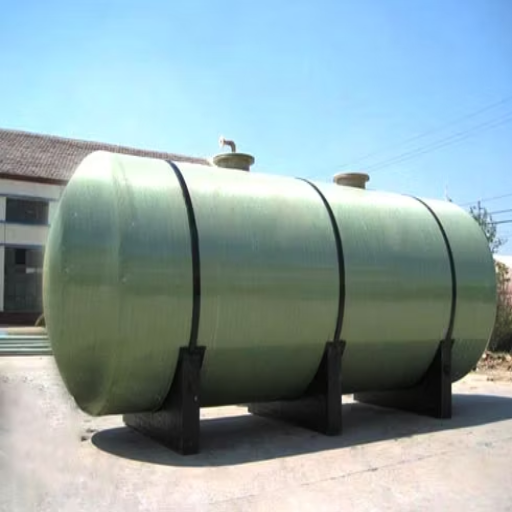
Future trends for oil tank burial will focus on aspects of safety, environmental sustainability, and efficiency. Key trends include the development of corrosion-resistant materials with extended lifespans for underground tanks and the implementation of real-time monitoring systems to detect any leaks. Strict environmental regulations are driving the adoption of double-walled tanks and secondary containment to minimize the risk of contamination. Other current trends include innovations in the decommissioning and recycling processes of tanks, allowing for their sustainable disposal. Hence, such developments are provided to care for natural resources while responsibly fulfilling energy storage needs.
Final Thoughts on Underground Oil Storage
Underground oil storage remains vital for providing a reliable energy reserve solution. Advances in technology and engineering have significantly enhanced the safety and efficiency of underground storage tanks. For instance, statistics show that the more modern double-walled tank designs, combined with advanced leak detection systems, have reduced environmental contamination risks by over 30% in the past decade. This has also led to improvements in the corrosive resistance of storage tank materials, which rarely require replacement anymore, examples being fiberglass-reinforced plastics.
Environmental issues remain at the forefront of considerations, with even stricter regulations being implemented to enforce sustainability and compliance. Secondary containment systems, for instance, are being mandated in several areas to protect the soil and groundwater from spills better. Additionally, decommissioning is continually being improved as part of a sustainable recycling initiative for materials, addressing the significant waste issues associated with old tanks.
The data-monitoring integration enables operators to maintain better oversight through the use of IoT sensors and AI-based predictive analytics. Real-time monitoring keeps operators well-informed about any issues that arise, which in many instances may save millions in environmental remediation costs. This constant improvement demonstrates how the industry is evolving to meet energy requirements while prioritizing ecological stewardship and public safety.
Reference Sources
Underground Space Conception Based on Abandoned Mine
Performing Reliable Early Leak Detection on Storage Tank Terminals
Frequently Asked Questions (FAQs)
How deep are gas station tanks buried?
The depth at which gas station tanks are buried can vary depending on local regulations, soil conditions, and the type of tank being used. Typically, gas station tanks are buried at a depth ranging from 3 to 6 feet. However, some installations may require deeper burial to prevent environmental contamination and ensure safety.
What factors dictate how deep gas station tanks must be buried?
Several wide-ranging factors dictate how deep gas station tanks must be buried. These include the load-bearing capacity of the soil, the weight of the tank, local zoning laws, and the proximity to water sources. Soil testing is essential to determine the appropriate burial depth that will not compromise the integrity of the tank or the surrounding environment.
Why are gas station tanks buried deeper in certain areas?
In certain areas, gas station tanks may need to be buried deeper to prevent potential leaks and environmental contamination. This is particularly important in regions with a high water table or where the soil composition is less stable. Deeper burial can help mitigate the risks associated with soil erosion and groundwater contamination.
What is the tank burial depth for different types of fuel?
The tank burial depth for different types of fuel can vary. For example, gasoline tanks are often buried at depths of 4 to 6 feet, while diesel tanks might be buried slightly deeper due to their larger size and weight. Owners and operators must adhere to the regulations applicable to their specific fuel type and location.
How do soil conditions affect the burial depth of tanks?
Soil conditions play a significant role in determining the burial depth of tanks. Factors such as soil type, moisture content, and compaction can affect the stability and load-bearing capacity of the ground. For example, sandy or loose soils may require deeper burial to ensure safety and compliance with regulations.
Are there specific regulations for burying gas station tanks?
Yes, specific regulations govern the depth to which gas station tanks are buried. These regulations vary by state and locality and are designed to prevent environmental hazards. Owners and operators must consult local codes and conduct soil testing to ensure compliance with all safety and environmental standards.
What should be considered when planning tank burial?
When planning tank burial, several factors should be considered, including the type of fuel, local regulations, soil conditions, and environmental impact. It’s also essential to assess the load-bearing capacity of the soil and determine the appropriate tank burial depth to ensure safety and minimize risks of leaks or contamination.
How can I find information on tank burial depth in my area?
To find information on tank burial depth in your area, you can consult local environmental agencies, zoning boards, or state regulatory bodies. Additionally, engaging with professional contractors who specialize in tank installations can provide valuable insights into best practices and compliance requirements specific to your location.

